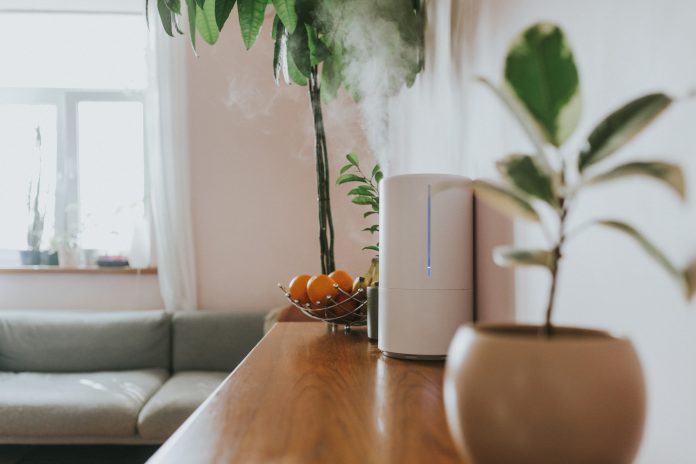Recent heat pump developments have made it possible to tackle the thorny issue of poor indoor air quality without sacrificing energy efficiency. Tim Mitchell, Sales Director at Klima-Therm, outlines some of the alternatives
Two recent news reports highlight the pressing need for dramatic mitigation measures to guard against mounting air quality challenges.
The first is related to the uproar caused by Clean Air Zones, especially the Ultra Low Emission Zone (ULEZ), which has recently been expanded by London Mayor Sadiq Khan to cover every borough in the capital. Although it has been mired in political controversy, the aim of ULEZ is pure and simple – to curtail poor quality air caused mainly by polluting vehicles, which is impacting the health of Londoners.
The second report concerns an alarming rise in hospital admissions resulting from COVID. Cases are said to have doubled in a month, and at least two significant new variants of the virus have emerged in recent weeks.
The urgent need for improved indoor air quality
Both these high-profile news stories underscore the urgent requirement for action to improve air quality and the importance of good air quality to the health and well-being of people.
This is particularly relevant in the case of indoor air quality (IAQ), which can be defined as the environmental characteristics inside buildings that affect human health, comfort, and work performance. This is not least because exposure to air pollution in buildings can cause various health issues, including respiratory diseases, heart disease, cognitive deficits,
and cancer.
Ventilation and air conditioning are the main contributors to the effective control of IAQ. The former aids in the removal or dilution of indoor airborne pollutants and assists in moderating indoor temperatures. The latter also helps determine how hot or cold a room is, a key component in the fight against bacteria and viruses, which prefer higher temperatures.
The role of heat pumps in indoor air quality
Heat pumps have a major role to play here. Not only do they help protect people’s health by regulating indoor temperatures, but they are also particularly energy efficient and kinder to the environment in terms of producing lower carbon emissions than burning fossil fuels to achieve the same heat output. Additionally, they unlock energy recovery options that do not exist with other technologies.
The greening of the electricity grid means the electrification of heat is a powerful part of our lower carbon future. And heat pumps, rather than direct electrical heating, make the best use of cleaner electricity.
Exhaust air heat pumps– sometimes called heat pump ventilation or micro heat pumps – combine ventilation, heating, and hot water in a single unit.
They extract heat from ventilated (or exhaust) air, effectively reusing ‘waste’ heat from the air in the home.
Exhaust air heat pumps are typically used in domestic settings. However, another important heat pump development – this time for commercial applications – is to combine the technology with air handling units (AHUs). Indeed, employing AHUs with integral refrigeration is a fast-growing sector of the air conditioning industry.
Heat pump AHUs help to ensure occupied spaces in buildings are as clean and safe as possible by enhancing the system’s air cleaning capabilities at the same time as they control the internal temperature.
The limitations of heat pumps AHU’s and the ways around it
However, heat pump AHUs have always betrayed two limitations. The first is the risk of performance loss during defrost cycles, just when the heat is actually needed. The second is that a defrost cycle increases energy consumption and costs.
There is, happily, a rather neat solution to these predicaments. The HTM 03-01 compliant 3DxHP series AHU supplied by Klima-Therm overcomes these risks by eliminating the defrost cycle altogether, thus ensuring there is no interruption of thermal output or sudden increase in energy consumption during a defrost cycle. It also helps to eliminate cold spots.
The 3DxHP’s pioneering design uses the heat pump’s own energy to prevent any need for a defrost cycle. As well as consuming less energy than a traditional system, this also provides the guarantee of useful heat when it is needed most.
But the benefits don’t end there. Installation costs can be significantly reduced as there is no external heating source such as boilers or external heat pumps or cooling source like chillers that must connect to the AHU.
Furthermore, the built-in refrigeration system saves on refrigerant charge by minimising the refrigerant content eliminating pipe runs through the building. The 3DxHP unit incorporates a variable frequency drive scroll compressor for enhanced part-load performance.
Water source heat pump
Meanwhile, the Klima-Therm-supplied Rhoss EXP/HT heat pump uses a technologically advanced hybrid four-pipe air or water source heat pump to produce simultaneous or independent cooling and heating using heat recovery wherever possible for ‘free’ heating or cooling.
The trailblazing technology also employs a water source heat pump primarily for domestic hot water.
The Rhoss EXP/HT can produce independent cooling and heating. But what makes it exceptionally worthwhile is its use of a third internal heat exchanger so that, when cooling, the heating can essentially be free due to heat recovery, or vice versa.
The pioneering device boasts a 22% operating energy cost saving and 28% reduction in carbon emissions compared to a traditional chiller and boiler four-pipe solution (without a water source heat pump).
The Spectrum Water Heat Pump
Another exciting energy-saving heat pump development is the Engie Refrigeration Spectrum Water heat pump, designed for industrial and commercial applications or integration into heat networks and district heating in housing developments.
The Spectrum Water heat pump features a combination of innovative components, including oil-free turbo compressors with magnetic bearings, an efficiency-boosting open-flash economiser, and an intelligent programmable logic controller.
Instead of employing a single compressor, overall capacity is split among multiple compressors, which creates redundancies which maximise operational reliability.
The 12 models in the Spectrum series boast formidable performance with nominal heat outputs of 350 to 3,100kW, a water delivery temperature of up to 65°C, and the choice of four highly efficient refrigerants.
“High-temperature, low global warming potential air-cooled reversible heat pumps”
Finally, Klima-Therm also distributes the Rhoss POKER290, a ground-breaking new range of high-temperature, low global warming potential air-cooled reversible heat pumps with silent, brushless EC axial fans and state-of-the-art compressors.
This dedicated device features highly efficient scroll hermetic compressors and natural, eco-friendly R290 (propane) refrigerant gas, which has a GWP of just 3, so there are no harmful greenhouse gas emissions or F-gas requirements. This future-proof refrigerant is in pole position to become the default choice for small to medium-sized systems.
The modular POKER290 allows heating capacity to be increased according to plant load by connecting up to four units via the new Rhoss integrated electronic dynamic sequencer – SDR – which includes the domestic hot water production sequenced management covering a capacity range from around 48 to 190kW. Larger systems can also be covered by using multiples of these modules.

This work is licensed under Creative Commons Attribution-NonCommercial-NoDerivatives 4.0 International.











